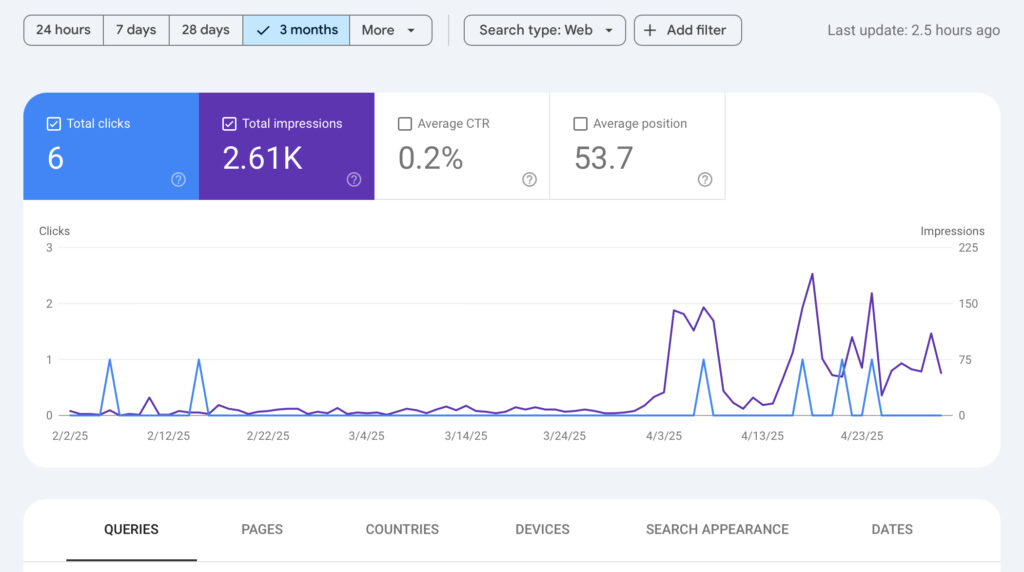27 Affiliate Marketing Terms Every Beginner Blogger Should Know
Ever feel like affiliate marketing is just a conversation full of inside jokes and secret handshakes you weren’t told about? Yeah, same.
All the jargon, weird terms, and vague rules can leave you wondering if you’re even invited to the party.
Every beginner blogger should know and understand these 27 affiliate marketing terms. It’s a massive boost in confidence when you start actually getting those “aha!” moments while you learn.
Ready to crack the code together? Let’s go!
Key Takeaways
Affiliate Marketing Essentials
- Key Terms: Learn words like affiliate, merchant, network, and publisher to sound confident and communicate smarter.
- SEO & Keyword Research: Attract search traffic ready to act.
- Money Metrics: CPA, commission, EPC, and CPC show what pays best.
- Track Results: Watch referral traffic, unique visitors, CTR, and conversion rate to spot what works.
- Cookie Duration: Longer cookies mean more earnings from referrals.
- SEO That Lasts: On-page & off-page SEO plus evergreen content keep your posts visible.
- Clear CTAs: Write call to actions that get people clicking.
- Editorial Calendar: Organize your posts for consistent, balanced growth.
- Payouts: Learn payout thresholds and payment options — no surprises.
- Recurring Commissions: Earn steady payouts month after month.
- Disclosure: Honesty builds trust and keeps you compliant.
- Glossary: Bookmark key terms to boost confidence and results.
- Daily Practice: Use these terms often. Progress will come and you’ll enjoy more wins.
Understanding Affiliate Marketing Terms and Meanings(What Are They Saying?)
It’s not about sounding smart, it helps you “talk shop” with other bloggers, spot common pitfalls before you trip, and get your ideas across more clearly.

Trust me, everything gets easier when you start understanding the language.
If you want to see how these terms fit into the big picture, check out How Affiliate Marketing Functions for a clear breakdown of how the whole system works.
And if you ever feel lost, remember: it’s not about memorizing a huge list. It’s about making blogging feel less overwhelming and way more exciting, especially as you start knowing your audience and sharing what you know with the world.
Core Affiliate Marketing Concepts
Getting a grip on the core ideas behind affiliate marketing is like learning the basic chords on a guitar. Once you know them, you can start to play real songs or in this case, build real income from your blog.
Every beginner needs to know the difference between an affiliate, a merchant, a network, a publisher, and those mysterious commission models everyone talks about.
Trust me, nailing these basics gives you an instant confidence boost. We’ll break them down together.
SEO
You’re going to hear this term a lot, like a toddler saying ‘look at me!’; loud, frequent, and impossible to ignore.
This stands for Search Engine Optimization and is how search engines like Google and Bing understand what your blog posts are about. Without proper SEO, even your best compelling content will never be seen by the people searching for it.
Affiliate
Let’s start with the obvious one: the affiliate. That’s you; the blogger who promotes products or services made by someone else. When a reader clicks your unique link and makes a purchase (or sometimes just signs up), you pocket a commission.
Your main job is to introduce exceptional products to your audience, provide genuine opinions, and serve as a supportive friend who guides them to their next favorite tool or purchase.
Merchant
The merchant is the business (or person) with something to sell. You might see them called advertisers, brands, or retailers. They create the offer and set the rules.
When you join their affiliate program, you become sort of a “remote salesperson” for them. The better you understand what the merchant wants, the easier it is to match the offer to your readers’ interests.
Network
Some affiliate programs run directly through the merchant, but many use an affiliate network. Think of them as the middleman, handling tracking, payments, and sometimes even tools to help both sides.
Networks make life easier because you can access a bunch of merchants (and products) all in one place. And they make sure everyone actually gets paid, on time.
Networks like ShareASale, CJ Affiliate, Clickbank, and Amazon Associates, are some great places for beginners to see what’s out there. Compare these programs and learn the ropes with less risk.
Publisher
Just to keep things spicy, you’ll hear some networks or merchants call affiliates “publishers.” It means exactly the same thing, someone who promotes and links to offers through their blog, email list, or even social channels.
If you’re writing, sharing, or recommending online, you’re a publisher.
CPA (Cost Per Action)
This is where things get real. The CPA (Cost Per Action) model means you get paid every time a reader completes a specific action, like making a purchase, starting a free trial, or signing up for a newsletter.
The action varies by offer, and so does the payout. Sometimes you’ll see other abbreviations too (CPL is Cost Per Lead, CPS is Cost Per Sale).
Good news: these are industry-standard and pretty simple once you’ve seen a few in action. If you want a full cheat sheet of terms and models, check out this comprehensive affiliate marketing dictionary for more examples.
Commission
The heart of the matter. The commission is the money you earn each time your promotion leads to a conversion (that “action” we just talked about).
Some programs pay flat fees—think $50 for every sale, while others offer percentages, like 5% or 40% of the order value. Here’s where you REALLY want to read the fine print!
Sometimes the highest commission isn’t the best fit for your readers, and sometimes a small commission on a recurring subscription pays off bigger over time.
Picking offers that fit your audience’s needs (and your style) is the key to a steady income. There’s no shortcut, smart affiliates learn to spot the best deals and explain them honestly, which builds trust fast.
Quick recap for the “Key Terminologies Every Affiliate Blogger Should Know”:
- SEO: Search Engine Optimization, having search engines understand your content.
- Affiliate: That’s you, recommending products and earning when people take action.
- Merchant: The business with something to sell.
- Network: The middleman, where you find, track, and manage offers.
- Publisher: Another word for affiliate—just keep blogging!
- CPA: How you get paid; each “action” earns you a commission.
- Commission: The cash in your pocket for a successful referral.
Wondering where to go next? I always suggest new bloggers keep a quick glossary handy in the early days. Take a peek at these 2 well-curated glossaries: 231 Blogging Terms You Need to Know by Ryan Robinson and SEO Glossary of Terms by Edd Dawson to expand your vocabulary without feeling like you’re in a study group.
Mastering these terms is truly your first “YES!” moment as an affiliate blogger. Next time someone tosses around CPA, merchant, or publisher, you’ll nod, smile, and know exactly what’s going on.
Traffic, Tracking, and Analytics Terms Explained

Tracking blog traffic and analytics can FEEL like staring at the cockpit of a spaceship. All those numbers, graphs, and strange words? It’s enough to make your brain do somersaults.
When you know what you’re looking at, you take charge of your blog’s growth. It becomes FUN to peek under the hood and spot what’s working (and what needs a tune-up).
If “Affiliate Marketing Terms Every Beginner Blogger Should Know” had a home base, this section would be it! These buzzwords help you get to know your audience, focus your energy, and let’s be honest, helps keep you motivated to keep going.
Referral
Referral traffic means anyone who found your blog through a link on another site.
Think of it like being at a cookout and someone says, “Hey, you should talk to Jamie over there about travel tips!” That’s a referral.
In the blog world, it’s a sign someone trusts you enough to send their people your way. Keeping tabs on referrals isn’t just for vanity, this tells you which partnerships or guest posts are PAYING OFF.
Want more proof of how valuable tracking this is? Affiliate marketing analytics experts often point to referral metrics as a secret weapon for boosting your income over time.
Unique Visitor
A unique visitor is one real person who lands on your blog, counted only once no matter how many times they pop in during a set period.
Picture a friend coming over to your house three times in a week, they still only count as ONE unique guest. Why does this matter? This number shows the true size of your audience.
When you see it growing, you know your reach is expanding, not just the same five superfans hitting refresh.
Conversion Rate
Conversion rate is your “batting average.” It’s the percentage of readers who do the thing you want like buy, sign up, download, whatever the goal is.
Imagine 100 people read your post, and 10 join your email list. That’s a conversion rate of 10%. Understanding this term helps you know if your content is CONNECTING with your audience or just making noise.
Pro tip: even a small boost in conversion rate can have a huge impact on affiliate earnings.
Click-Through Rate (CTR)
CTR stands for Click-Through Rate. It’s the percentage of people who click a link compared to those who see it. In affiliate marketing, CTR reveals how many visitors are clicking your affiliate links, banners, or ads when they appear on your blog.
For example, if 1,000 people see a link and 50 click it, your CTR is 5%. A higher CTR means your content or ad is compelling and grabs attention.
Looking at the data in Google Search Console, CTR shows how often users click your site’s link after seeing it in search results.
For example, if your page was shown 500 times (impressions) in Google search and 25 people clicked, your CTR would be 5%.
Tracking CTR in Google Search Console helps you spot which pages and keywords attract clicks, so you can improve titles and descriptions to boost organic traffic.
If you ever want to geek out on stats, take a look at key affiliate marketing metrics that will break it down even more.
Attribution
Attribution is about giving credit where it’s due.
Who actually influenced your visitor to buy that thing you recommended? Was it your killer blog post, a cheeky Instagram Story, or an email?
Attribution models help decide which channel or piece of content “deserves” the payoff, which is HUGE in figuring out where to spend your time.
Get this right and you avoid guessing, your strategy becomes focused and facts-based instead of a shot in the dark.
Cookie Duration
In affiliate marketing, “cookie duration” means the window of time your referral is tracked.
If someone clicks your link today, then comes back and buys a week later, will you still get credit? Some programs give you 24 hours, others 30 days, and some as long as 90 days.
Longer cookie duration = more chances to get paid for influence!
If you want the deep dive and the mechanics behind tracking, check out affiliate tracking method types, which explains how it all works.
Why These Terms Matter for Optimizing Your Blog
Mastering these analytics words isn’t just for tech nerds (I say that as one). It turns your wild guesses into smart choices.
When you understand referral traffic, unique visitors, CTR, and cookies, you see your efforts pay off in real time.
You can double down where it counts, skip the fluff, and watch your blog grow stronger, almost like “leveling up” in a game.
SEO and Content Marketing Glossary for Affiliate Bloggers

If you want steady, lasting gains in blogging, you have to get comfortable with SEO and content marketing.
These two work together(like peanut butter and jelly) when you’re building a site packed with affiliate links and aiming for real visitors.
Getting the hang of these affiliate marketing terms makes every strategy clearer, from brainstorming your next post to chasing that first big payout.
Think of this glossary as your sidekick. It’s got the quick definitions, the why, and the how, all spelled out so you’re not left scratching your head.
Keyword Research
Keyword research is the X on a treasure map. It’s an informational bounty that tells you what people are actually typing into Google, so you can give them answers, tips, or products right when they want them.
Smart keyword research means writing posts that stand out, not just add to the noise.
- Why it matters: If you chase keywords nobody searches, your posts sit lonely. If you only chase crowded topics, you’ll fight for scraps.
- How it helps affiliates: You spot hidden gems and rank for questions your audience actually has. That’s more traffic, and yes, more clicks to your affiliate links.
Pro tip: Tools like Google Keyword Planner or free Chrome add-ons help you peek at demand before you start typing. For a deeper breakdown on terminology, check out this useful affiliate glossary that covers even more words.
3 Keyword Research Tools I Use
RightBlogger – Free version available, Affordable at only $24.99/month, Has 80+ tools beyond just for keyword research, Interactive free Discord community where the founders hang out and answer your questions.
Keywords Everywhere – Starts at $21/year for 100,000 credits, Search your keywords along with your competitor’s ranking keywords, Look up competitor’s backlinks and see there DA(domain authority score).
Keywords People Use – Try for free and starts at $15/month, Philosophy of this keyword research tool doesn’t go by monthly search volumes but rather by answering people’s questions and grouping these together to gain topical authority, Founder Ed Dawson has over 20 years experience in affiliate marketing industry.
Long-Tail Keywords
Long-tail keywords are those super-specific phrases people type when they know what they want, like “best waterproof backpack for hiking in 2025.”
Sure, they get fewer searches, but winning those searches is easier. Plus, those visitors are READY to take action.
- Why use them? Easy wins and a higher chance to show up on Google fast.
- Affiliate edge: These keywords often lead to higher buyer intent, which boosts conversions.
On-Page SEO
On-page SEO is the process of optimizing the content and structure of your website’s pages to help them rank higher in search engines.
It’s as simple as adding your main keyword where it counts: meta title, site title, headings, first paragraph, and a sprinkle throughout. Don’t forget adding your keyword in alt text for images, when appropriate, and in your meta description.
DO NOT KEYWORD STUFF!(a process used to gain-the-system years ago). Add them naturally throughout your content.
On-page SEO also covers improving page speed, making your site mobile-friendly, using internal links, and organizing content with headings and subheadings.
The goal is to make each page easy for both search engines and real people to understand, which helps increase visibility and attracts more targeted traffic.
- Write for humans first—Google bots second.
- Clean up broken links, double-check spelling, and use snappy subheadings so people stick around.
- Make it a habit, and you’ll build posts that rise instead of sink.
Off-page SEO
This refers to actions taken outside your own website to improve its search engine rankings. The main focus is building your site’s reputation, authority, and trustworthiness in the eyes of search engines.
Key factors include:
- Backlinks: Getting high-quality links from other reputable websites. More relevant, natural links signal that your content is valuable.
- Social Signals: Shares, likes, and engagement on social media can boost awareness and indirectly help visibility.
- Brand Mentions: When trusted sites mention your brand, even without linking, it builds authority.
- Guest Posting: Writing articles for other blogs or websites that include links back to your site.
Off-page SEO is all about showing Google and others that your site is respected and recommended by real people across the web. The more positive attention your site gets from outside sources, the higher it can rank.
Content Syndication
Content syndication means sharing your articles on other sites to get more eyes on your work. Think of it as spreading flyers around town, each one leads people back to your site.
- Upside: More traffic, more exposure, and sometimes extra backlinks for SEO.
- Watch out: Always syndicate LEGALLY and give your original post time to get indexed on your blog first.
Evergreen Content
Evergreen content never goes out of style, like “how to start a blog” or “best tips for saving money.” Topics that keep attracting readers year after year give your affiliate blog a steady stream of visits.
- Why go evergreen? It means less work in the long run and more reliable traffic.
- Top tip: Sprinkle in timely posts for variety, but make sure your blog isn’t only covering trends that burn out fast. For a look at how bad picks can hold you back, peek at my rundown of Blog Niches to Avoid before you invest weeks chasing a dud.
Call to Action (CTA)
A call to action (or CTA) tells your reader what to do next. Click here! Read more! Buy now! It’s like a signpost at the fork in the road. Don’t be shy, if you want readers to use your link, give ‘em clear instructions.
- Use friendly, specific CTAs. “Grab your free checklist!” works better than “submit.”
- Put CTAs in places readers are ready to click, like after you’ve solved a problem or shared a killer tip.
Editorial Calendar
An editorial calendar is your blogging planner. It’s how you track what to write, when to post, and what keywords to target. Think of it like meal prepping: plan ahead, avoid scrambling, and keep your affiliate blog healthy for the long haul.
This will keep you from repeating topics you’ve already covered. Last thing you wanna do is confuse the search engines.
Set aside 30 minutes each month to update your calendar. You’ll hit deadlines, spot gaps, and make sure you’re mixing topics in a way that attracts new visitors and keeps regulars excited.
Trust me: this is where hobby bloggers become pros.
If you want to build trust and connection with your audience (and really, you do), understanding these terms will make every piece you write sharper and more helpful.
Knowing your target words, planning your content, and tracking what’s working is how you turn blog posts into real revenue. Tighten up your keyword aim and you’ll see faster, consistent progress, without the guesswork.
For even better results, spend a bit more time on Understanding Your Audience. The better you know your crowd, the easier it is to pick winning keywords and create content that sticks.
Common Affiliate Program and Payment Terms

Cracking affiliate programs and payment terms is like finally reading the fine print on your favorite snack, except this time, it’s your money on the line, not just the mystery cheese powder.
No more playing ‘Will I get paid?’ roulette. Now you actually know how and when the cash rolls in. Shocking, I know.
For beginners eager to master these terms, I’ll turn confusing payment dashboards into something you can actually celebrate.
I’ll walk you through the main ideas you’ll bump into as you set up your blog for income. Let’s highlight what’s important, what’s “fine print,” and what keeps you safe and credible with your readers.
Payout Threshold
Let’s start with a classic “are we there yet?” moment for affiliates: the payout threshold.
This is the minimum amount you need to earn before a program sends you your money. Some programs set it at $10, others ask you to reach $100 or more.
If you’re excited about your first few sales, but you can’t find the money in your account yet, check this number. It’s hiding in your dashboard or the welcome email.
Reach the threshold, and then the program pays out; no magic, just rules. Tracking this goal turns earning into a game, not a guessing contest.
Payment Methods
Not all affiliate programs pay the same way. You’ll commonly see payment by:
- Direct bank transfer
- PayPal
- Check
- Wire transfer
- Gift cards (yes, really!)
EPC (Earnings Per Click)
This shows you how much you earn, on average, every time someone clicks your affiliate link.
It’s a quick-glance way to see which products or programs actually put money in your pocket.
High EPC equals strong earning potential. Low EPC? Maybe skip chasing that one.
Tracking EPC over time helps you learn what your audience loves (and what they ignore). Data over luck, every single time.
CPC
CPC stands for Cost Per Click. It’s a pricing model used in online advertising and affiliate marketing where advertisers pay a set amount each time someone clicks on their ad or link.
For affiliate bloggers, knowing this will help you understand how much you can earn from each click your readers make on sponsored links.
A higher CPC usually means more potential earnings per click, but these keywords tend to be more competitive.
Tracking this metric lets you focus on topics that balance good payouts with realistic chances to rank and attract clicks.
Recurring Commissions
Recurring commissions are the holy grail for many affiliate bloggers.
Instead of earning once per sale, some programs reward you every month (or quarter) as long as your referral stays a customer. This setup means reliable, snowballing income.
Think of it as planting a tree that keeps dropping fruit, instead of a one-time apple.
If your niche favors memberships or software, always check if a program offers recurring commissions, it’s a multiplier for your future passive earnings.
Disclosure Requirements
This one isn’t just a nice-to-have, it’s the law and also common sense.
Being open about affiliate relationships builds trust with readers (and keeps you out of trouble). You must let people know you might earn money when they click links or make purchases.
How do you do it? Clear, simple language. Place disclosures at the top of posts, not hidden in a corner.
For tips on how to keep your site honest and full of integrity, take a look at How to Build An Affiliate Marketing Website and Establish Trust for real-world examples and best practices.
Not only does disclosure meet legal rules (like the FTC guidelines), it just feels better for everyone.
When you play fair, people come back for more of your advice, and those repeat visits turn into steady clicks and a growing reputation.
Quick list for “Key Terminologies Every Affiliate Blogger Should Know” within program payment details:
- Payout Threshold = Minimum to get paid.
- Payment Methods = How your money is sent.
- EPC = Average money you make per click.
- Recurring Commissions = Ongoing income from one sale.
- Disclosure Requirements = Clear, honest, and required!
Keep these terms in mind as you explore new affiliate programs. You’ll have more fun, make smarter picks, and set yourself up for the kind of blogging success that feels real.
Conclusion
Learning the “Affiliate Marketing Terms Every Beginner Blogger Should Know” is like grabbing the front seat on your blogging journey, everything just makes sense faster.
When you speak the language, it stops feeling like guesswork and starts feeling like real progress.
These terms are little power-ups you can use every day, making it easier to spot what works, fix what doesn’t, and have honest, helpful conversations in the affiliate world.
Don’t let this glossary gather dust. Bookmark it or even print it out, so you have a quick reference when things get fuzzy.
Recommended Glossaries:
Make a habit of weaving these terms into your daily blogging and watch how your confidence grows with every post, every report, and every little win.
Ready to kick things up a notch? Take what you’ve learned and plug it into your next post or analytic deep dive.
Not sure where to start? Look into some effective content creation strategies to put your knowledge to work for your readers and your income.
The most exciting breakthroughs come when you use this lingo out loud, ask questions, share advice, and celebrate your wins.
Thanks for reading, and keep this page handy!
Which term did you find the most helpful, and how will you use it to boost your affiliate blog?
Drop a comment or share your thoughts with fellow bloggers, you might just spark someone else’s lightbulb moment.













